Related Research Articles
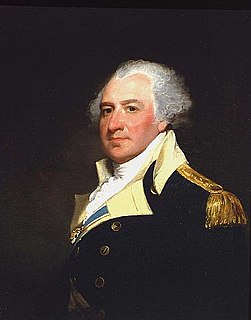
Thomas Mifflin was an American merchant, soldier, and politician from Philadelphia, Pennsylvania. He served in a variety of roles during and after the American Revolution, several of which qualify him to be counted among the Founding Fathers. He was the first governor of Pennsylvania, serving from 1790 to 1799; he was also the last president of Pennsylvania, succeeding Benjamin Franklin and serving from 1788 to 1790.
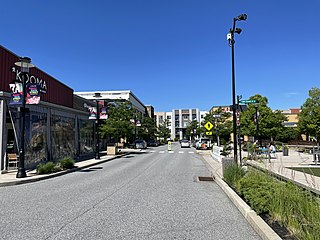
King of Prussia is a census-designated place in Upper Merion Township, Montgomery County, Pennsylvania, United States. As of the 2010 census, its population was 19,936. The community took its unusual name in the 18th century from a local tavern named the King of Prussia Inn, which was named after King Frederick the Great of Prussia. Like the rest of Montgomery County, King of Prussia continues to experience rapid development. One of the largest shopping malls in the United States, King of Prussia, is located here. Also located here is the headquarters of the Nuclear Regulatory Commission Region I. King of Prussia is considered to be an edge city of Philadelphia, consisting of large amounts of retail and office space situated at the convergence of four highways.
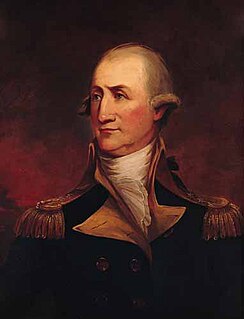
John Peter Gabriel Muhlenberg was an American clergyman, Continental Army soldier during the American Revolutionary War, and political figure in the newly independent United States. A Lutheran minister, he served in the United States House of Representatives and United States Senate from Pennsylvania.
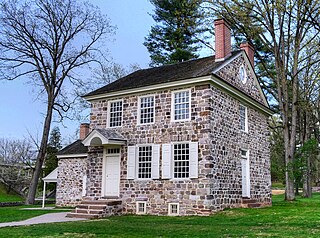
The Village of Valley Forge is an unincorporated settlement located on the west side of Valley Forge National Historical Park at the confluence of Valley Creek and the Schuylkill River in Pennsylvania, United States. The remaining village is in Schuylkill Township of Chester County, but once spanned Valley Creek into Montgomery County. The name Valley Forge is often used to refer to anywhere in the general vicinity of the park, and many places actually in King of Prussia, Trooper, Oaks, and other nearby communities will use the name, leading to some ambiguity on the actual location of the modern village.
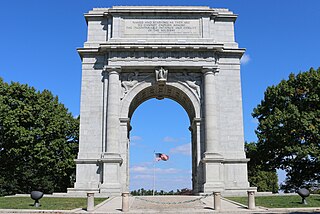
Valley Forge National Historical Park is the site of the third winter encampment of the Continental Army during the American Revolutionary War, taking place from December 19, 1777, to June 19, 1778. The National Park Service preserves the site and interprets the history of the Valley Forge encampment. Originally Valley Forge State Park, it became a national historical park in 1976. The park contains historical buildings, recreated encampment structures, memorials, museums, and recreation facilities.

Pennsylvania was the site of key events and places related to the American Revolution. The state, and especially the city of Philadelphia, played a critical role in the American Revolution.

The Episcopal Diocese of Pennsylvania is a diocese of the Episcopal Church in the United States of America encompassing the counties of Philadelphia, Montgomery, Bucks, Chester and Delaware in the state of Pennsylvania.

The Valley Forge Pilgrimage and Encampment is the oldest annual scouting event in the world. It was first held on February 22, 1913, and has been held every year since. The event is hosted by the Cradle of Liberty Council and commemorates the soldiers of the Continental Army who braved the winter of 1777-78 at Valley Forge. Each year more than 2,000 brave the winter chill of the Delaware Valley to participate.

Washington's Headquarters at Valley Forge, also known as the Isaac Potts House, is a historic house that is one of the centerpieces of Valley Forge National Historical Park in southeastern Pennsylvania. Probably built about 1773, General George Washington made his headquarters here during the encampment at Valley Forge of the Continental Army between December 1777 and June 1778. The restored building is part of the Valley Forge National Historical Park and is open to the public. It was designated a National Historic Landmark in 1972.
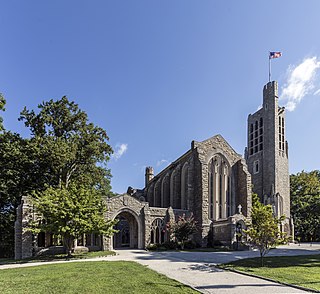
Washington Memorial Chapel — located on Pennsylvania Route 23 in Valley Forge National Historical Park — is both a national memorial dedicated to General George Washington and an active Episcopal parish in Valley Forge, Pennsylvania. The church was inspired by a sermon preached by Anglican minister Reverend Dr. W. Herbert Burk, founder and first rector of the parish. The building was designed by architect Milton B. Medary. It was listed on the National Register of Historic Places on May 1, 2017, and is undergoing an active restoration campaign.
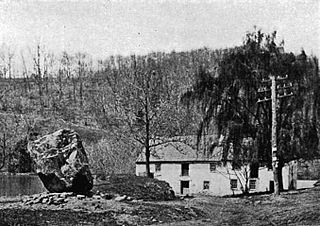
Gulph Mills is an unincorporated community in Upper Merion Township, Montgomery County, Pennsylvania. It is served by the Upper Merion Area School District. There is a station on the Norristown High Speed Line.

Valley Forge functioned as the third of eight winter encampments for the Continental Army's main body, commanded by General George Washington, during the American Revolutionary War. In September 1777, Congress fled Philadelphia to escape the British capture of the city. After failing to retake Philadelphia, Washington led his 12,000-man army into winter quarters at Valley Forge, located approximately 18 miles (29 km) northwest of Philadelphia. They remained there for six months, from December 19, 1777 to June 19, 1778. At Valley Forge, the Continentals struggled to manage a disastrous supply crisis while retraining and reorganizing their units. About 1,700 to 2,000 soldiers died from disease, possibly exacerbated by malnutrition.

St. David's Episcopal Church, often known as St. David's at Radnor or, less often, as Old St. David's, is a parish of the Episcopal Church in the United States of America, founded in the early 18th century and named after the Patron Saint of Wales. A Book of Common Prayer, given as a gift to Lydia Leamy in 1854, refers to St. David's as "Radnor Church". It has grown to be the largest congregation in the Episcopal Diocese of Pennsylvania, with some 950 active families and 3,000 members. The original church building, built in 1715 and the subject of a Longfellow poem, still stands. It is in nearly the same condition as when it was built, several new buildings having been constructed to house the growing congregation. The adjacent graveyard is a part of the historic site. The church property is divided by the borders of three townships, in two counties, often causing confusion as to the church's location. The church office is located at 763 South Valley Forge Road in Wayne, Radnor Township, Delaware County, Pennsylvania.

The Museum of the American Revolution is a museum in Philadelphia, Pennsylvania, dedicated to telling the story of the American Revolution. The museum was opened to the public on April 19, 2017, the 242nd anniversary of the first battles of the war, at Lexington and Concord, on April 19, 1775.

George Washington is a statue by the French sculptor Jean-Antoine Houdon from the late 18th century. Based on a life mask and other measurements of George Washington taken by Houdon, it is considered one of the most accurate depictions of the subject. The original sculpture is located in the rotunda of the Virginia State Capitol in Richmond, Virginia, and has been copied extensively.

Nicola D'Ascenzo was an Italian-born American stained glass designer, painter and instructor. He is best known for creating stained glass windows for the Washington Memorial Chapel in Valley Forge, Pennsylvania; the Nipper Building in Camden, New Jersey; the Loyola Alumni Chapel of Our Lady at Loyola University Maryland; the Folger Shakespeare Library and Washington National Cathedral, both in Washington, D.C.

General George Washington used a pair of campaign tents (marquees) throughout much of the American Revolutionary War. In warm weather, he used one for dining with his officers and aides, and the other as his military office and sleeping quarters. Canvas panels and poles from both tents survive, and are currently owned by four separate historical organizations.

Edward Roche was an American merchant who served in both houses of the Delaware General Assembly, as a delegate to the Delaware state constitutional convention, and in the American Revolutionary War.
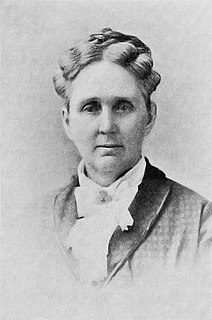
Anna Morris Holstein was an American civil war nurse, and author. From 1862 until the close of the war, Holstein was engaged in the hospital service, and after the Battle of Gettysburg, she was matron-in-chief of a hospital in which 3,000 seriously wounded men were looked after. She was also the founder and first regent of the Centennial and Memorial Association of Valley Forge, and a regent of the Valley Forge Chapter, Daughters of the American Revolution (D.A.R.). It was largely through her influence that George Washington's headquarters at Valley Forge were purchased, restored and made accessible to the people.
The Centennial and Memorial Association of Valley Forge was incorporated in Montgomery County Pennsylvania in 1878, focusing on the mission to save, acquire, restore and preserve General Washington's Valley Forge Headquarters and surrounding acreage as parcels of it became available.
References
- 1 2 3 4 Treese, Lorrett (2010). Valley Forge: Making and Remaking a National Symbol. Penn State Press. ISBN 0271041730.
- ↑ "Museum of the American Revolution enters the home stretch".
- ↑ Ferguson, Andrew (1 May 2017). "Immerse Yourself in 1776 and All That". Weekly Standard. Retrieved 25 April 2017.